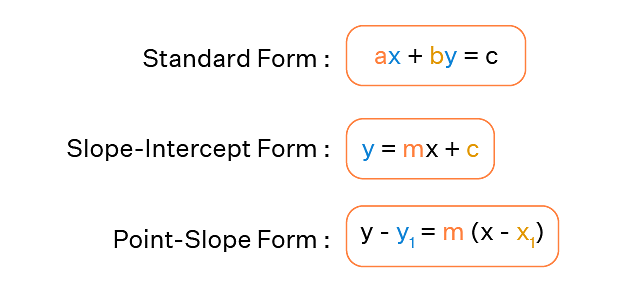Let $S_1$ and $S_2$ be respectively the sets of all $a \in R -\{0\}$ for which the system of linear equations $ a x+2 a y-3 a z=1$ $ (2 a+1) x+(2 a+3) y+(a+1) z=2$ $(3 a+5) x+(a+5) y+(a+2) z=3$ has unique solution and infinitely many solutions Then
- $S_1=\Phi$ and $S_2=R-\{0\}$
- $S_1$ is an infinite set and $n\left(S_2\right)=2$
- $S_1=R-\{0\}$ and $S_2=\Phi$
- $n \left( S _1\right)=2$ and $S _2$ is an infinite set
The Correct Option is C
Solution and Explanation
Hence
Top Questions on Straight lines
- The equation of a straight line is given by \( y = 3x + 4 \). What is the slope of the line?
- BITSAT - 2025
- Mathematics
- Straight lines
- Find the slope of the line passing through the points $ (1, 2) $ and $ (3, 6) $:
- BITSAT - 2025
- Mathematics
- Straight lines
- The equation of the line passing through the point \((1, 2)\) and perpendicular to the line \(3x + 4y - 12 = 0\) is:
- AP EAPCET - 2025
- Mathematics
- Straight lines
- Find the slope of the line perpendicular to the line $ 3x + 4y - 12 = 0 $.
- AP EAPCET - 2025
- Mathematics
- Straight lines
- The maximum area of a right-angled triangle with hypotenuse \( h \) is: (a) \( \frac{h^2}{2\sqrt{2}} \)
- VITEEE - 2024
- Mathematics
- Straight lines
Questions Asked in JEE Main exam
- Find the equivalent resistance between two ends of the following circuit:

- JEE Main - 2025
- Current electricity
Given below are two statements. One is labelled as Assertion (A) and the other is labelled as Reason (R):
Assertion (A): In an insulated container, a gas is adiabatically shrunk to half of its initial volume. The temperature of the gas decreases.
Reason (R): Free expansion of an ideal gas is an irreversible and an adiabatic process.In the light of the above statements, choose the correct answer from the options given below:
- JEE Main - 2025
- Current electricity
- Find the output voltage in the given circuit.

- JEE Main - 2025
- Current electricity
- A wire of length $ 25 \, \text{m} $ and cross-sectional area $ 5 \, \text{mm}^2 $ having resistivity $ 2 \times 10^{-6} \, \Omega \cdot \text{m} $ is bent into a complete circle. The resistance between diametrically opposite points will be:
- JEE Main - 2025
- Current electricity
Current passing through a wire as function of time is given as $I(t)=0.02 \mathrm{t}+0.01 \mathrm{~A}$. The charge that will flow through the wire from $t=1 \mathrm{~s}$ to $\mathrm{t}=2 \mathrm{~s}$ is:
- JEE Main - 2025
- Current electricity
Concepts Used:
Straight lines
A straight line is a line having the shortest distance between two points.
A straight line can be represented as an equation in various forms, as show in the image below:

The following are the many forms of the equation of the line that are presented in straight line-
1. Slope – Point Form
Assume P0(x0, y0) is a fixed point on a non-vertical line L with m as its slope. If P (x, y) is an arbitrary point on L, then the point (x, y) lies on the line with slope m through the fixed point (x0, y0) if and only if its coordinates fulfil the equation below.
y – y0 = m (x – x0)
2. Two – Point Form
Let's look at the line. L crosses between two places. P1(x1, y1) and P2(x2, y2) are general points on L, while P (x, y) is a general point on L. As a result, the three points P1, P2, and P are collinear, and it becomes
The slope of P2P = The slope of P1P2 , i.e.
\(\frac{y-y_1}{x-x_1} = \frac{y_2-y_1}{x_2-x_1}\)
Hence, the equation becomes:
y - y1 =\( \frac{y_2-y_1}{x_2-x_1} (x-x1)\)
3. Slope-Intercept Form
Assume that a line L with slope m intersects the y-axis at a distance c from the origin, and that the distance c is referred to as the line L's y-intercept. As a result, the coordinates of the spot on the y-axis where the line intersects are (0, c). As a result, the slope of the line L is m, and it passes through a fixed point (0, c). The equation of the line L thus obtained from the slope – point form is given by
y – c =m( x - 0 )
As a result, the point (x, y) on the line with slope m and y-intercept c lies on the line, if and only if
y = m x +c